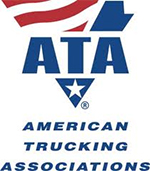Is the U.S. Trucking Industry Entering a Profit-Killing Era of Overcapacity?

Could the U.S. manufacturing economy be at the start of an extended slowdown or just a brief correction to draw down inventory, and if the economy is slowing, is the U.S. trucking industry on the verge of entering a profit-killing era of overcapacity as it was during the Great Recession of 2008-2010.
As surface transportation’s peak period ends for the year, and trucking eyes the traditionally slowest time for the industry as first quarter 2016, economic signals are, at best, mixed.
U.S. factory activity grew last month at its slowest pace since May 2013 as manufacturers pared their stockpiles and cut jobs.
The Institute for Supply Management’s index of factory activity slipped to 50.1 in October from 50.2 in September. The figures barely signal growth, which is any reading above 50.
Third-quarter Gross Domestic Product grew at a 1.5 percent annual rate in the third quarter, far below the 3.9 percent pace in the April-June quarter.
Related: U.S. Manufacturing May Be In Trouble
But U.S. auto sales are booming, projected to reach 18.1 million for full year 2015, which would be a record year.
US freight shipments had the worst September since 2010. The number of shipments in September inched up 1.7% from August, according to the Cass Freight Index.
Squeezed by a strong dollar and weak economies in China and elsewhere, exports are also stalling.
ISM’s Employment Index also fell sharply, from 50.5 to 47.6, meaning manufacturers cut jobs in October, the last month that full reports are available.
But new orders jumped, suggesting that business may be picking up in late 2015. And a gauge of production rose for the first time since July.
What the Economists Are Saying
“We’re hopeful this will mark the low,” Ian Shepherdson, an economist at Pantheon Macroeconomics, said in a note to clients. “It looks as though the downshift in manufacturing activity may be coming to an end.”
ABF Freight, the seventh-largest LTL carrier reported a decline in revenues due to lower fuel surcharges and lower tonnage levels, even though shipments rose year over year. But ABF showed “great cost discipline,” Stifel analyst David Ross noted.
October was worse from a volume perspective, as LTL tonnage fell 6 percent year over year on flattish shipments. But ABF reported a 4.9 percent year over year contract renewal increase as its annual general rate increase (GRI) largely has held.
Third quarter earnings from major trucking companies run the gamut from slightly falling revenue (largely because of drop in fuel surcharges) largely offset by better pricing, especially contractual business.
UPS Freight, the fifth-largest LTL, reported tonnage off 10 percent (matching the record decline reported in the 2009 3Q during the depth of the Great Recession) and shipments down 5 percent year over year (the worst drop since 2008 fourth quarter).
Some of this was caused by selective pricing actions but is still indicative of what Ross called “the industrial recession we believe may be in” and the “soft” LTL freight environment in the third quarter.
Related: UPS Reports Surprise Drop in Revenue
That has spread to the truckload side as well. Heartland Express, the 12th-largest TL, reported a whopping 35 percent drop in third quarter earnings year of year. Operating revenue decreased 15.9 percent to $182.5 million. Revenue, excluding fuel surcharge revenue, decreased less precipitously, by 8.1 percent to $160.7 million.
Because Heartland was able to raise revenue yield between 3 and 5 percent in the quarter, volume declines were probably in the 11 to 13 percent range. Analysts said Heartland’s revenue decline appears to be related to both the elimination of unacceptable residual freight resulting from the recent Gordon acquisition as well as the challenges associated with hiring and retaining high caliber drivers, and the relatively soft freight market. Heartland posted an 84.5 operating ratio, up from 79.3 in the year-ago third quarter.
Are these drops in revenue a one-time blip due to reduction in bloated inventory, or are they the ominous start to something deeper? Most analysts chose the former.
Bob Costello, chief economist for the American Trucking Associations, recently told an industry gathering that the third quarter economic slowdown was merely a blip on the radar, fueled by manufacturers and retailers burning off excess inventory from earlier in the year.
“The U.S. economy is on sound footing,” Costello said at the ATA Convention in October. “When the inventory adjustment is done, there will be a high level of freight.”
What shippers are wondering is, “What will be the cost of moving that freight?” Will the industry add capacity to unrealistic levels, causing an oversupply of trucks, leading the price wars and rate-cutting so rampant in trucking’s past?
Industry analysts say those are legitimate questions, giving the trucking industry’s historical lack of pricing discipline.
“My personal belief is the trucking industry needs to realize production of goods will have ups and downs,” Satish Jindel, principal of SJ Consulting, which closely tracks industry pricing, told Logistics Management. “They should not build capacity built on rosy outlooks coming from economists and other organizations that have a bias to be optimistic.
“The reality should show they should only have capacity to handle base GDP growth rate,” JIndel added. “Everything above that should be handled by methods that can provide capacity on interim basis. So they’re not stuck with excess drivers and trucks.”
So far, the industry does not appear to be doing that. Sales of Class 8 heavy trucks are on pace for one of the best years in history - around 260,000 units in North America. That is a warning sign of future overcapacity, Jindel said.
“This is where the asset carriers lose to 3PLs because they (third party logistics companies) don’t add to capacity,” Jindel explained. “Every time I see truck sales going up, I say, ‘Those guys have lost their minds.’ Those old trucks end up with somebody else. They do not leave the industry.”
Truckers have to realize one tenet, Jindel said: “You don’t have control over demand. You only have command over supply.”
A Class 8 heavy truck, when traded in for a new one, doesn’t go in the recycling heap. While fleets may not be adding capacity in their own company but they are adding it in the industry, Jindel said. “It will come back to haunt them,” he warned. “They should park their trucks instead.”
Bradley Jacobs, president and CEO of fast-growing XPO Logistics, which recently bought Con-way Inc. for $3 billion, said flatly: “We’re not impervious to the overall economy.”
While XPO, which is on track to have $15 billion revenue in 2016 with $14 billion of costs, said while there are many efficiencies the company can do to control its costs that ultimately its financial condition is largely determined by U.S. and worldwide economic growth.
“We’re one of biggest purchases of trucks, fuel, office supplies, equipment that goes in warehouses. There are many, many categories of supplies that will be consolidated on a global basis that we can control,” he said. “But clearly we will be affected by the economy.”
Related: XPO Logistics
In addition, Jacobs said: “Our customers overall on a global basis are still growing but the amount of growth is relatively small. They are not contracting; things are not getting worse, they are getting better but only modestly so in aggregate and that is a trend you see on a global basis - growth but slow growth.”
A recent report by Stifel Inc. said the industrial economy is heading into a recession perhaps. But Jacobs disputed that and called the LTL market “still strong.”
“Con-way Freight pricing was up more than 4 percent in the (third) quarter and contracts that are being signed in the last month have been executed at between 3-to 6 percent increases,” Jacobs told Logistics Management. “Pricing in LTL is strong.”
Related: 2015 State of Logistics Less-than-Truckload

Article Topics
American Trucking Associations News & Resources
Trucking industry balks at new Biden administration rule on electric trucks: ‘Entirely unachievable’ Groups warn of $1 trillion cost for electrification of America’s trucking industry New coalition is focused on fighting new Labor Department independent contractor rule ATA data points to truck tonnage declines to start 2023 December Truck tonnage ends 2023 with a modest gain, reports ATA ATA warns of ‘tangled mess’ due to latest Labor Department independent contractor ruling November truck tonnage is down, reports ATA More American Trucking AssociationsLatest in Transportation
Baltimore Bridge Collapse: Impact on Freight Navigating Amazon Logistics’ Growth Shakes Up Shipping Industry in 2023 Nissan Channels Tesla With Its Latest Manufacturing Process Why are Diesel Prices Climbing Back Over $4 a Gallon? Luxury Car Brands in Limbo After Chinese Company Violates Labor Laws The Three Biggest Challenges Facing Shippers and Carriers in 2024 Supply Chain Stability Index: “Tremendous Improvement” in 2023 More Transportation

















